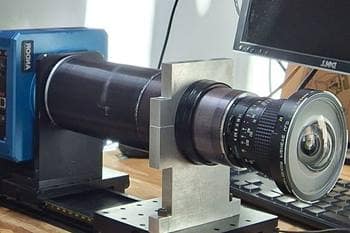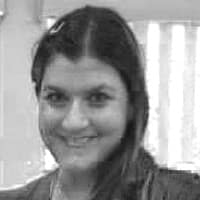Embry-Riddle Student Treks to Andes Mountains for Atmospheric Waves Research


While in Chile for a research project, Ph.D. student Feener-Rivera and Dr. Liu visited the renowned SOAR Telescope. (Photo: Embry-Riddle/Adriana Feener-Rivera)
Embry-Riddle Aeronautical University graduate student Adriana Feener-Rivera’s atmospheric waves research took her high into the Chilean Andes, where dark, clear skies and one of the driest climates on the planet create ideal conditions for astronomy.
By collecting data from sites in the Andes Mountains of both Chile and Argentina, the research could help better predict weather patterns in space and determine how these waves and winds are generated by weather on Earth, particularly during hurricanes and storms. Pursuing her Ph.D. in Engineering Physics, Feener-Rivera is assisting Dr. Alan Liu, a professor in the Department of Physical Sciences, on the research, which is funded by a $1 million National Science Foundation (NSF) grant.
“It was an experience of a lifetime,” Feener-Rivera said of her recent visit to the Chilean Andes for the project with Liu. “It’s very dry and windy at the site in Chile, so we get a lot of good data from there because there are so many nights with clear skies.”
Sites in the Andes Mountains are ideal for optical observations due to year-round clear skies in a dry, high-altitude environment, said Liu. The region is also of great scientific interest because the high mountains and strong thunderstorms and winds in the Amazonian rainforest generate atmospheric waves.
Atmospheric waves are oscillations in the atmosphere, resulting from the pull and push of Earth’s gravity and atmospheric pressure. They can be readily felt in the changing wind and temperature around us, Liu said.
Part of Feener-Rivera’s work involves building airglow imagers at Embry-Riddle’s Daytona Beach Campus and then installing and testing them at several locations in Chile and Argentina. The airglow imagers detect light emitted by atoms and molecules in the upper atmosphere, providing information on wave structures and their movement.
The airglow imagers will be placed strategically at distances of about 100 to 200 kilometers apart, allowing for a large overlap in viewing the same atmospheric volume but from different angles, said Liu. The measurements will be used to create 3D pictures of atmospheric waves using complex mathematical methods, like those employed in creating CT scans for medical applications.
“This project will form a network to measure small-scale wave perturbations in the upper atmosphere,” said Liu. “Adriana will then later use this data for understanding the dynamical processes in this region as her Ph.D. research.”
While in Chile, Feener-Rivera learned about the instrumentation used to collect the research data. She and Liu also visited an observatory where two renowned telescopes, SOAR and Gemini South, are used for astronomical research.
“I learned about those two telescopes when I was an undergraduate astronomy student, but I never expected to actually see them someday,” she said.

This airglow imager detects light emitted by atoms and molecules in the upper atmosphere, providing information on wave structures and their movement. (Photo: Embry-Riddle/Adriana Feener-Rivera)
A Passion for Experimental Particle Physics
Feener-Rivera, whose parents are both music professors, grew up in Kansas City and earned her bachelor’s degree in Physics and Astronomy from the University of Missouri-Kansas City.
“Ever since I was a kid, I loved building things and learning about space,” she said.
An internship at SLAC National Accelerator Laboratory,a Department of Energy (DOE) national laboratory run by Stanford University in Menlo Park, California, allowed her to engage in more hands-on work, including building specialized equipment.
“It changed my whole view of my career,” said Feener-Rivera. “It was an amazing experience.”
She also completed an internship at Brookhaven National Laboratory, an Energy Department national lab that focuses on research in nuclear and particle physics.
“I enjoyed working in experimental particle physics during my last two internships,” said Feener-Rivera. “It’s science that makes sense in my head.”
Feener-Rivera said Embry-Riddle’s Ph.D. program and her unique global research experience are providing her with the engineering and scientific research skills necessary for the next step in her career. Her doctoral dissertation research will use the data collected in Chile and Argentina to understand the properties of atmospheric waves and how winds impact them, she said.
“Dr. Liu is a great professor. He’s been super understanding and so helpful in guiding me through the entire process,” said Feener-Rivera. “It’s been a wonderful experience.”

 Melanie Stawicki Azam
Melanie Stawicki Azam